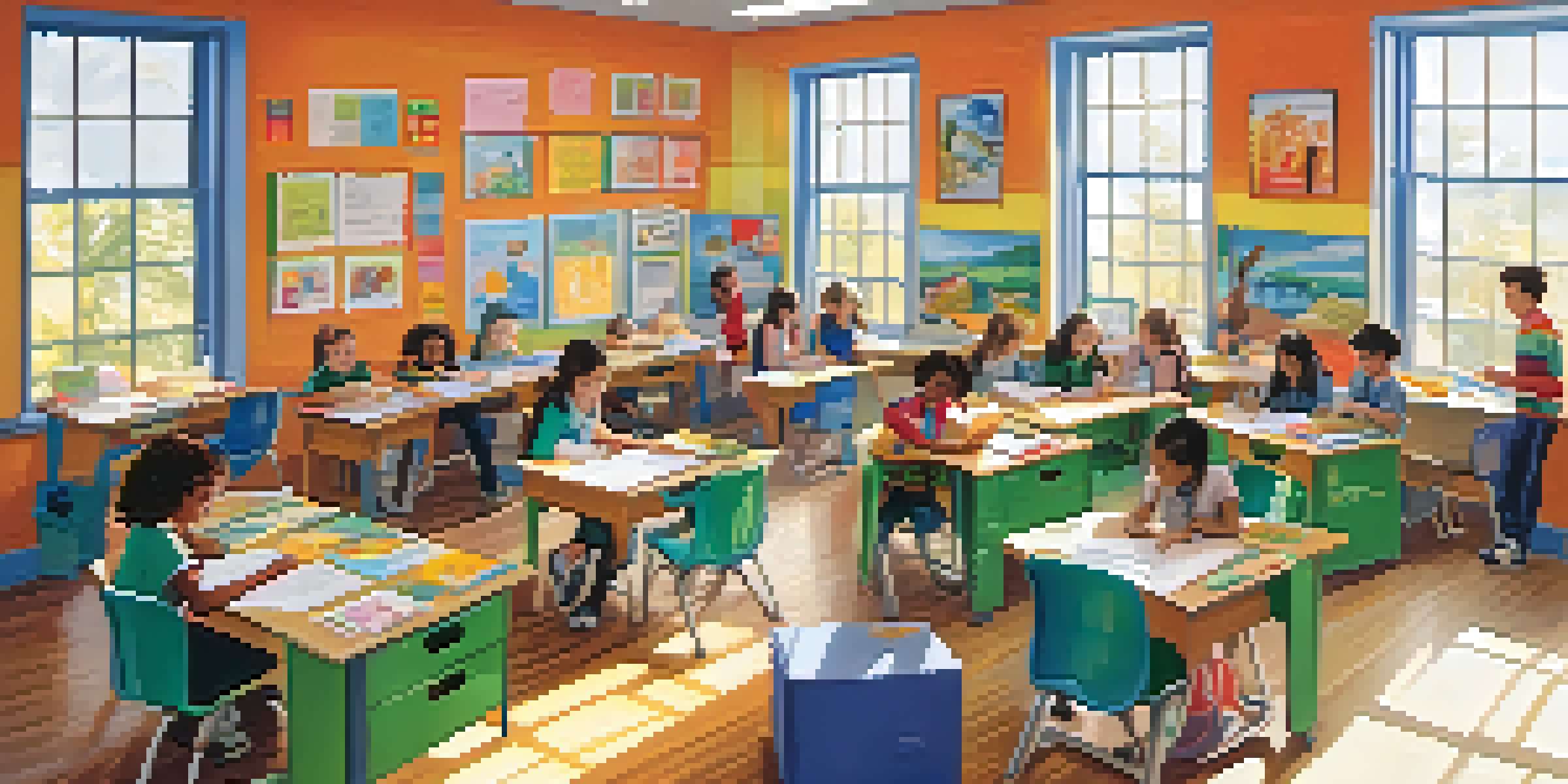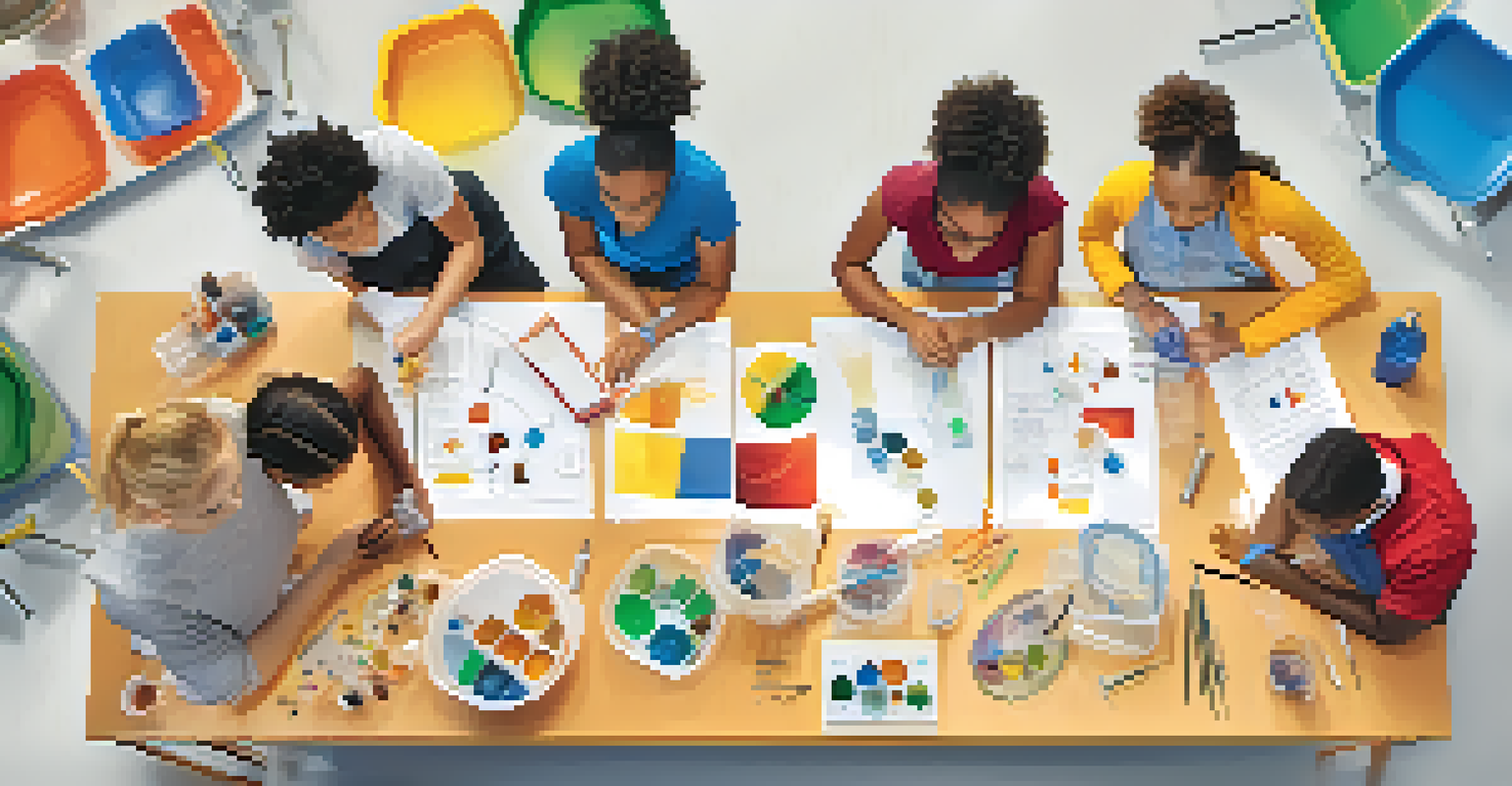The Influence of Classroom Management on Learning Spaces

Understanding Classroom Management and Its Importance
Classroom management refers to the techniques and strategies teachers use to create an effective learning environment. It's not just about maintaining order; it's also about fostering a space where students feel safe and engaged. Think of it as the foundation of a house—without a strong base, everything else can crumble.
The single biggest problem in communication is the illusion that it has taken place.
Effective classroom management involves setting clear expectations and creating routines that help students know what to anticipate. This clarity reduces anxiety and allows students to focus on learning rather than discipline. When students understand the rules and routines, they can thrive academically and socially.
Ultimately, good classroom management empowers teachers to guide students more effectively. It encourages participation and collaboration, making the classroom a dynamic learning space. Just like a well-tuned orchestra, when every part plays its role, the music of learning flows beautifully.
The Role of Environment in Classroom Management
The physical environment plays a crucial role in classroom management. Factors like seating arrangements, lighting, and decor can significantly influence student behavior and engagement. For instance, a well-organized classroom can enhance focus and minimize distractions, allowing students to concentrate on their work.

Creating a positive and inviting atmosphere is key to effective classroom management. Classrooms that are bright and welcoming encourage students to take ownership of their learning. Imagine walking into a space filled with inspiring visuals and comfortable seating—it's hard not to feel motivated!
Effective Management Creates Engagement
Classroom management techniques foster a safe and engaging learning environment, allowing students to thrive.
In addition, the layout of the classroom can encourage collaboration and interaction among students. By arranging desks in clusters or circles, teachers can foster a sense of community, making it easier for students to communicate and work together. This collaborative spirit is essential for a dynamic learning environment.
Establishing Clear Expectations for Student Behavior
Setting clear expectations is a fundamental aspect of classroom management. When students know what is expected of them, they are more likely to meet those expectations. Think of it as a roadmap; without it, students may feel lost and unsure of how to navigate their learning journey.
Education is not the filling of a pail, but the lighting of a fire.
A well-defined set of rules helps establish a sense of order and respect in the classroom. Teachers can collaboratively create these rules with students, promoting ownership and accountability. This collaboration not only enhances compliance but also fosters a positive classroom culture where everyone feels valued.
Regularly revisiting these expectations reinforces their importance. Just like a sports team practices plays repeatedly, students benefit from ongoing discussions about behavior and learning goals. This consistency helps solidify the expectations in their minds, creating a more conducive learning environment.
The Impact of Teacher-Student Relationships on Learning
Strong teacher-student relationships are pivotal in effective classroom management. When students feel connected to their teachers, they are more likely to engage and participate actively. Imagine having a personal coach who believes in your abilities; this support can motivate you to achieve more than you thought possible.
Building trust and rapport with students fosters a safe space for learning. When students feel respected and understood, they are more willing to take risks and share their thoughts. This open communication can lead to deeper discussions and a richer learning experience.
Clear Expectations Enhance Learning
Setting clear behavior expectations helps students navigate their learning journey and promotes accountability.
Additionally, positive relationships can help teachers identify and address individual student needs. A teacher who knows their students well can tailor their approach to support different learning styles and challenges. This personalized attention not only enhances academic performance but also boosts students' confidence.
Utilizing Effective Instructional Strategies
Instructional strategies play a significant role in classroom management. Engaging lessons that cater to different learning preferences can keep students focused and motivated. For example, incorporating hands-on activities or group projects can transform a standard lesson into an interactive experience that captivates students' interest.
Variety in instructional methods can help maintain student attention and engagement. By mixing lectures with discussions, multimedia presentations, and interactive tasks, teachers can create a dynamic learning space. This diversity not only makes learning more enjoyable but also addresses the varying needs of students.
Moreover, effective instructional strategies encourage active participation, which is crucial for classroom management. When students are actively involved in their learning, they are less likely to exhibit disruptive behavior. This engagement creates a positive feedback loop where learning becomes the priority, rather than managing behavior.
Fostering a Positive Classroom Culture
A positive classroom culture is essential for effective classroom management. This culture is built on respect, inclusivity, and support, creating a space where students feel valued. Just like a garden flourishes when nourished, a classroom thrives when students and teachers cultivate a supportive environment.
Celebrating achievements, big or small, helps reinforce this positive culture. Recognizing students' efforts fosters a sense of belonging, motivating them to contribute to the classroom community. When students feel appreciated, they are more likely to engage fully in their learning experience.
Positive Relationships Boost Performance
Strong teacher-student relationships create trust and motivation, leading to improved academic outcomes.
Furthermore, promoting diversity and inclusion within the classroom enriches the learning environment. Encouraging students to share their unique perspectives enhances collaboration and understanding. This inclusive atmosphere not only improves classroom management but also prepares students for a diverse world.
Ongoing Assessment and Reflection for Improvement
Ongoing assessment and reflection are vital components of effective classroom management. Regularly evaluating student progress allows teachers to identify what's working and what needs adjustment. This continuous feedback loop helps create a responsive learning environment that adapts to students' needs.
Reflection on teaching practices is equally important. Teachers can analyze their classroom management strategies to determine their effectiveness. For instance, if certain approaches lead to increased engagement, they can be integrated into future lessons, creating a more effective learning space.

Additionally, involving students in the assessment process encourages ownership of their learning. When students reflect on their progress and set personal goals, they become active participants in their education. This collaboration not only enhances learning but also fosters a sense of responsibility and self-efficacy.